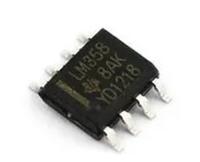| 型号 | 品牌 | 获取价格 | 描述 | 数据表 |
| LQM21PN3R3MGR | MURATA |
获取价格 |
Inductor |

|
| LQM21PN3R3MGR# | MURATA |
获取价格 |

|
|
| LQM21PN3R3MGRB | MURATA |
获取价格 |
Inductor |

|
| LQM21PN3R3MGRD | MURATA |
获取价格 |
Inductor |

|
| LQM21PN3R3NG0 | MURATA |
获取价格 |
Inductor |

|
| LQM21PN3R3NG0# | MURATA |
获取价格 |

|
|
| LQM21PN3R3NG0B | MURATA |
获取价格 |
Inductor |

|
| LQM21PN3R3NG0D | MURATA |
获取价格 |
Inductor |

|
| LQM21PN3R3NGR | MURATA |
获取价格 |
Inductor |

|
| LQM21PN3R3NGR# | MURATA |
获取价格 |

|
 LM317T数据手册解读:产品特性、应用、封装与引脚详解
LM317T数据手册解读:产品特性、应用、封装与引脚详解

 一文带你了解?DB3二极管好坏判断、参数信息、替代推荐
一文带你了解?DB3二极管好坏判断、参数信息、替代推荐

 LM358DR数据手册:引脚说明、电气参数及替换型号推荐
LM358DR数据手册:引脚说明、电气参数及替换型号推荐

 OP07CP数据手册解读:引脚信息、电子参数
OP07CP数据手册解读:引脚信息、电子参数
